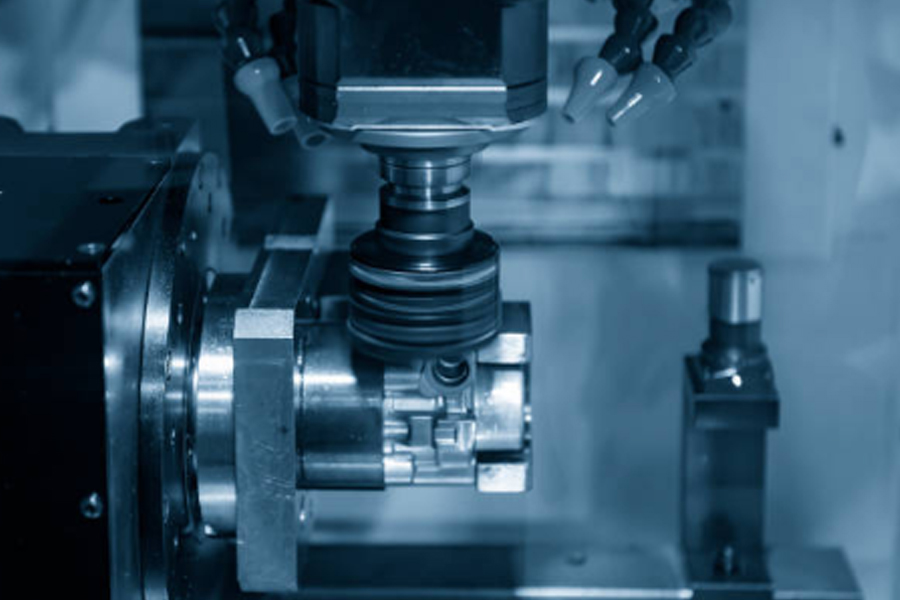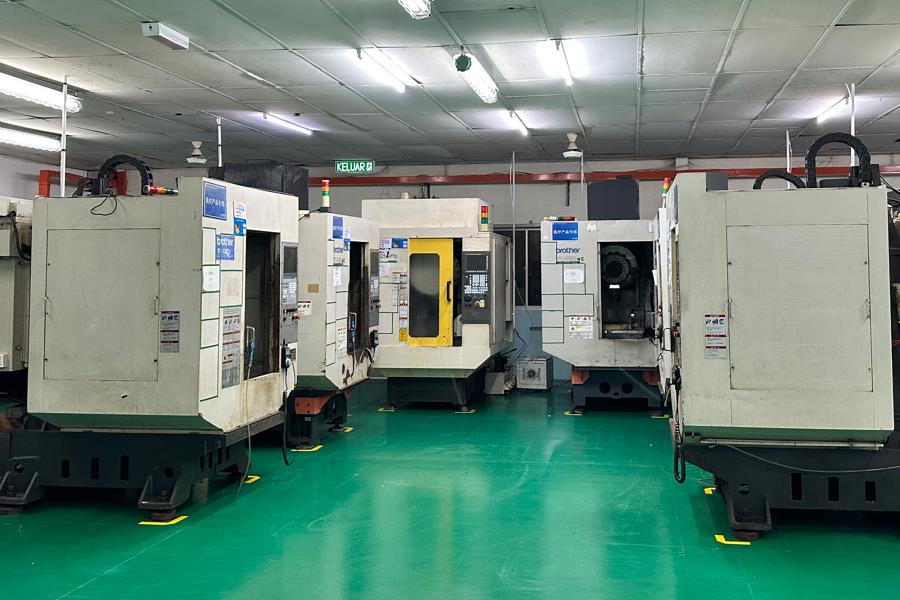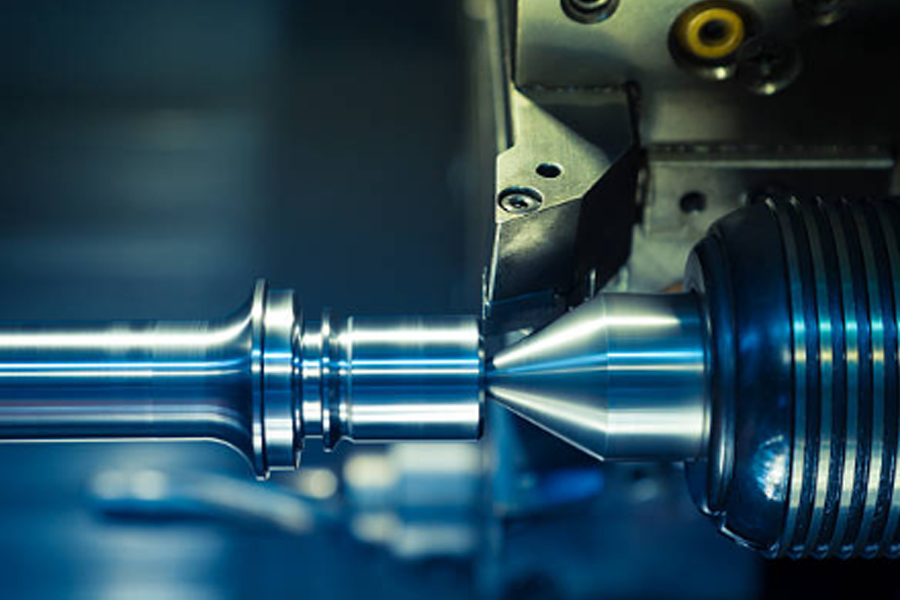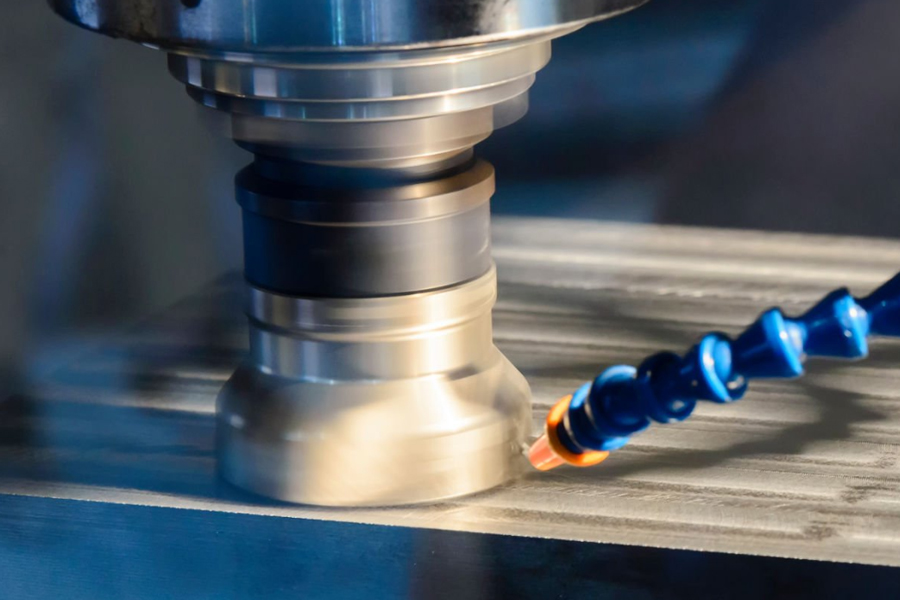Computer Numerical Control (CNC) machining is one of the most dependable ways to transform raw stock into high-precision metal and plastic parts for industries ranging from aerospace to electronics. Among the many CNC processes, end milling is arguably the most versatile. With one setup and a suitable collection of cutters, a CNC mill can rough away bulk material, sculpt free-form 3-D contours, and leave mirror-smooth finishing passes—often on the same workpiece.
For procurement specialists, engineers, and manufacturers, a solid grasp of end-milling fundamentals leads to better design choices, more accurate cost estimates, and smoother supplier relationships. This revised guide explains what end milling is, how it differs from other operations, which tools it uses, and why it remains indispensable in modern fabrication.
What Is CNC End Milling?
End milling is a subtractive manufacturing process in which a rotating cutting tool—the end mill—removes material from a stationary (or servo-controlled) workpiece. A defining feature of an end mill is the presence of helical cutting edges called flutes along its periphery. If those flutes converge at the tool’s center, the cutter is termed center-cutting; only then can it plunge straight into the material.
Because the tool can advance axially and move laterally, it can machine in virtually any direction:
- Axial plunges for drilling-like moves or helical bores
- Radial passes for side-wall cutting
- Simultaneous multi-axis paths for complex 3-D sculpting
Imagine a drill bit that can plunge, then immediately sweep sideways to open a pocket, follow a contoured wall, or trace the perimeter of a part—that is the power of an end mill.
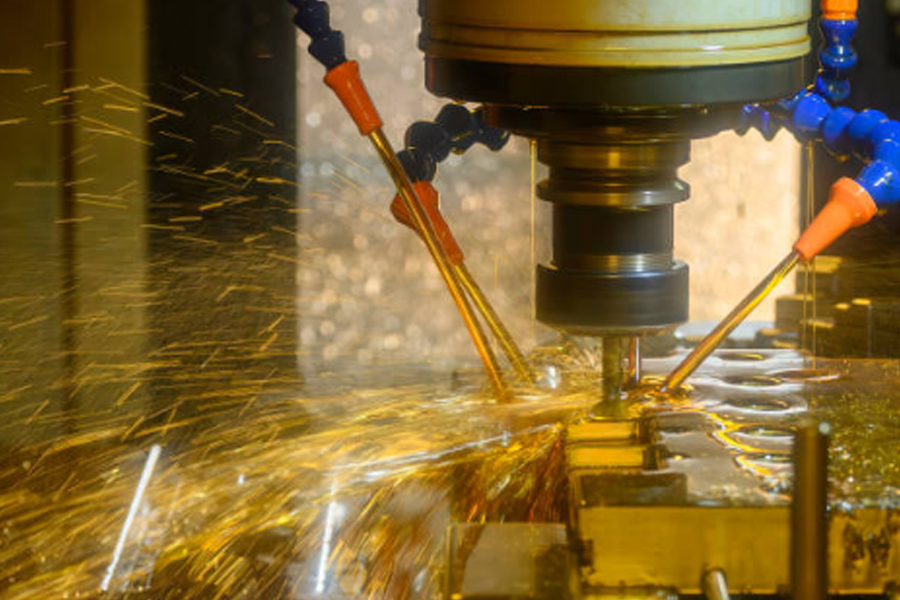
How End Milling Differs from Other CNC Operations
| Process | Primary Cutting Action | Typical Purpose | Key Limitation |
| Drilling | Tool spins and plunges along its own axis | Rapidly creates round holes | Cannot cut laterally |
| Face Milling | Large-diameter cutter removes material mainly with inserts near the tool face, plus some peripheral engagement | Quickly produces flat reference surfaces | Poor choice for deep-walled features |
| Turning | Workpiece rotates while stationary tool removes material | Creates rotational (cylindrical) parts | Limited to axisymmetric geometry |
| Slot Drilling / Slotting | 2-flute or 3-flute “slot drill” plunges and moves linearly to cut a channel exactly the tool’s width | Single-pass, standard-width slots | Width fixed to cutter diameter |
| End Milling | Cutter spins and can move axially, radially, and diagonally | Pockets, contours, 3-D surfaces, profiles, non-standard slots | Requires correct tool selection and programming expertise |
End Mill Tooling Overview
A single CNC milling machine may carry dozens of cutters in its automatic tool changer. Choosing the right geometry, diameter, flute count, and coating is the first step toward a successful run.
Flat (Square) End Mills
Geometry: Flat tip, sharp 90 ° corners
Ideal for: Pockets, steps, slots, side-wall profiling, facing small areas
Note: Best when a flat floor and crisp inside corners are required.
Ball-Nose End Mills
Geometry: Hemispherical tip, no flat bottom
Ideal for: 3-D surfacing, organic curves, large fillets, mold cavities
Note: Eliminates the “stair-step” effect seen with flat tools on curved surfaces.
Bull-Nose (Corner-Radius) End Mills
Geometry: Flat bottom plus a specified corner radius (e.g., R0.5–R3 mm)
Ideal for: Roughing and finishing pockets—corner radius strengthens the tool and yields stress-relieving fillets in the part.
Note: A general-purpose favorite thanks to its blend of strength and versatility.
Chamfer (Angle) Mills
Geometry: Angled tip (commonly 45 ° or 60 °)
Ideal for: Deburring sharp edges, countersinking fastener holes, creating aesthetic bevels.
Roughing (“Hog”) End Mills
Geometry: Serrated, corn-cob-style flutes that break chips into small pieces
Ideal for: Maximum metal removal in the shortest time; always followed by a finishing tool.
End-Milling Workflow
Step 1 – Design & CAM Programming
- CAD Model: Engineer produces a 3-D model with all tolerances and finish requirements.
- CAM Setup: Programmer imports the model, selects tools, and defines toolpaths.
- Cut Parameters: Spindle speed (RPM) and feed rate (IPM or mm/min) are calculated from formulas and proven shop data.
- G-Code Output: CAM post-processor converts the strategy into machine-readable instructions.
Step 2 – Machine Setup & Workholding
- Raw stock is clamped in a precision vise, fixture plate, or custom soft jaws.
- The first tool is loaded into the spindle, or multiple tools are pre-loaded into the ATC carousel.
- Probe or touch-off routines establish datum positions.
Step 3 – Cutting Operation
- The program runs, spinning the tool at thousands—or tens of thousands—of RPM.
- Axes interpolate to follow programmed paths with positional accuracies of ± 0.013 mm (± 0.0005 in) or better.
- Coolant options include flood, high-pressure through-spindle, or minimum-quantity lubrication (MQL), plus air blast for aluminum.
Step 4 – Feature Creation
| Feature | Typical Axis Motion |
| Pockets | 2-D XY, incremental Z plunges |
| Slots | Single linear pass or trochoidal sweeps |
| Profiles | Continuous XY tracing at specified Z depths |
| 3-D Contours | Simultaneous XYZ (and often A/B rotary) motion |
Advantages of CNC End Milling
- High Precision & Repeatability
- Positional accuracy within ± 0.0005 in (≈ ± 0.013 mm) supports tight-tolerance assemblies such as medical implants and aircraft fittings.Exceptional Versatility
- One machine and tooling package can cut 2-D features, sculpt organic 3-D surfaces, and finish mirror-quality faces—in a single setup.Broad Material Compatibility
- Metals: Aluminum, magnesium, stainless steels, tool steels, titanium, brass, copper, Inconel®, Hastelloy®
- Plastics: ABS, PEEK, Delrin (Acetal), polycarbonate, nylon
- Composites: CFRP, G-10/FR-4
- Woods & Foams for prototypes
- Efficiency with High-Speed & 5-Axis Machining
Lighter radial cuts at very high feed rates shorten cycle times while maintaining tool life. Multi-axis machines can reach five faces of a part without refixturing.Typical Applications by Industry
| Industry | Representative Parts |
| Aerospace & Defense | Monolithic wing ribs, titanium fuselage frames, 5-axis turbine blades, lightweight brackets |
| Automotive | Engine blocks & cylinder heads, aluminum transmission housings, stamping dies, suspension knuckles |
| Medical & Dental | Titanium hip stems, PEEK spinal cages, surgical forceps, patient-specific drill guides |
| Electronics & Consumer Goods | Unibody laptop enclosures, heat-sink fins, miniature RF connectors |
Key Factors for High-Quality End Milling
- Tool Material & Coatings
- High-Speed Steel (HSS): Lower cost, vibration-tolerant, used on older or less rigid machines.
- Solid Carbide: Higher stiffness, allows aggressive speeds/feeds for production work.
- Coatings: TiN, TiAlN, AlCrN, DLC—selected by workpiece material and cutting temperature; can extend tool life 3–10×.
- Proper Speeds & Feeds
- Correct chip load prevents rubbing (too slow) or breakage (too fast).
- CAM software often integrates built-in databases, but experienced machinists fine-tune on the shop floor.
- Coolant Strategy & Chip Evacuation
- Flood coolant or high-pressure through-spindle streams dissipate heat and flush chips.
- Air blast + MQL is common for high-speed aluminum work to avoid coolant-induced hydroplaning.
- Machine Rigidity & Operator Skill
- Box-way or linear-guide construction, properly leveled beds, and balanced spindles minimize chatter.
- Skilled personnel monitor tool wear, adaptive control, and in-process probing to keep parts in tolerance.
Design Considerations & Limitations
| Topic | Practical Design Tip |
| Internal Corners | Minimum inside radius ≥ cutter radius; specify R0.5 mm+ to avoid EDM or hand-work. |
| Tool Reach | Deep pockets (>3× tool Ø) require reduced cutting parameters or longer tools, which increase deflection. |
| Material Removal Rate | Leave ~0.5–1 mm stock for finishing after aggressive roughing passes. |
| Surface Finish Call-outs | Indicate Ra on critical faces; finishing strategy and tool choice depend on required roughness. |
| Threaded Features | Consider thread milling vs. tapping for exotic alloys; thread milling offers adjustable diameter. |
End Milling vs. Other Milling Processes (Quick Reference)
| Requirement | Best Choice | Why |
| Flatten the top of a large billet quickly | Face Milling | Wide cutter, high MRR, minimal passes |
| Machine a deep, variable-width pocket | End Milling | Flexible toolpaths, step-down roughing + finish |
| Cut a standard-width keyway in one pass | Slot Drill | 2-flute or 3-flute slotting tool matches final width |
| Produce a precision round hole fast | Drilling | Dedicated twist drill plunges axially, minimal cycle time |
| Sculpt a turbine blade’s airfoil | 5-Axis Ball-Nose End Milling | Continuous, collision-free multi-axis motion |
Conclusion
End milling remains a cornerstone of CNC manufacturing, enabling the production of precise, durable, and geometrically complex parts in metals, plastics, and composites. By selecting the right cutters, optimizing parameters, and partnering with a skilled, well-equipped shop, engineers can achieve consistent, cost-effective results.
Need high-precision milled parts?
Ares Precision in Malaysia is ISO 9001-certified and operates state-of-the-art 3-, 4-, and 5-axis CNC machining centers. Our engineers will review your design for manufacturability, recommend the optimal end-milling strategy, and deliver parts that meet the strictest quality standards.
Contact us today to discuss your project requirements and discover how our CNC milling capabilities can accelerate your production goals.


